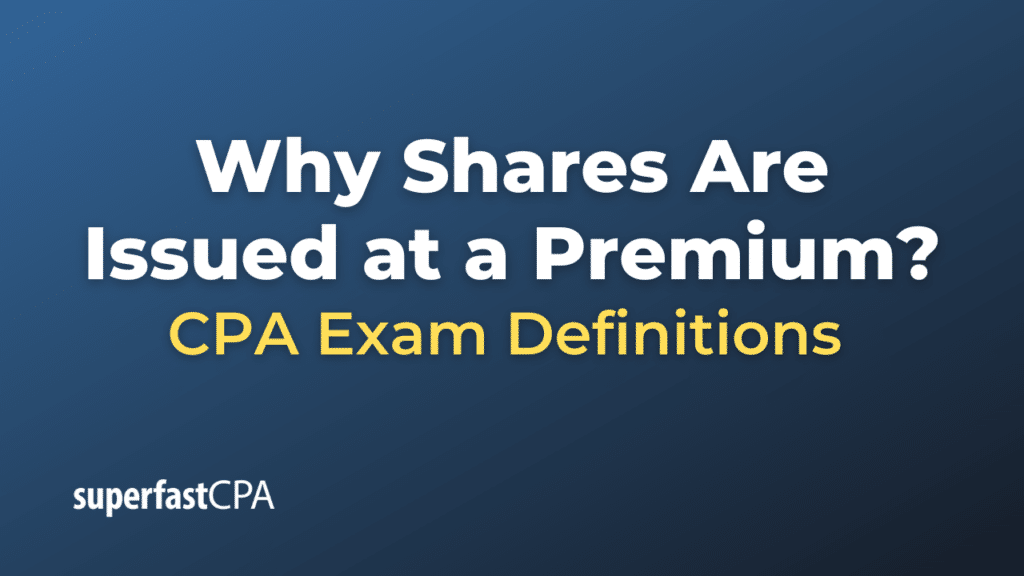Why Shares Are Issued at a Premium
Shares are issued at a premium when the price at which new shares are issued is greater than the stock’s nominal or par value. There are several reasons why a company might issue shares at a premium:
1. High Demand:
If the company is popular and there’s strong demand for its shares, investors may be willing to pay more than the nominal value.
2. Strong Financial Performance:
A robust financial track record can make shares more attractive, leading investors to pay a premium.
3. Growth Prospects:
Companies that are expected to grow rapidly in the future often command a premium on their share price.
4. Market Conditions:
In a bullish market, investors might be willing to pay more for shares, allowing companies to issue them at a premium.
5. Scarcity of Shares:
If a company’s shares are in limited supply, they may be issued at a premium due to scarcity.
6. Fundraising:
Issuing shares at a premium helps raise more capital than issuing them at par value. The excess amount over the par value goes into a separate equity account called “Share Premium” or “Additional Paid-in Capital.”
Example of Why Shares Are Issued at a Premium
Let’s consider a hypothetical example to illustrate why and how a company might issue shares at a premium.
TechStart Corp, a rapidly growing technology company, decides to issue additional shares to fund a new project. The company has a nominal or par value of $10 per share for its common stock. However, due to its strong financial performance and growth prospects, investors are willing to pay more than the par value.
TechStart Corp issues 1,000 new shares at a price of $20 per share, resulting in a premium of $10 per share over the par value.
Financials:
- Cash Raised: 1,000 shares × $20/share = $20,000
- Par Value: 1,000 shares × $10/share = $10,000
- Share Premium: 1,000 shares × ($20 – $10) = $10,000
Accounting Entries:
- Receiving Cash: The company receives $20,000 from the issuance.
- Debit: Cash $20,000
- Issuing Shares: The shares are issued at $10 par value.
- Credit: Common Stock $10,000
- Recording Share Premium: The premium of $10 per share is also recorded.
- Credit: Share Premium (or Additional Paid-in Capital) $10,000
So, the accounting journal entries would look like this:
- Debit: Cash $20,000
- Credit: Common Stock $10,000
- Credit: Share Premium $10,000
Post-Issuance Balance Sheet:
After the share issuance, TechStart Corp’s balance sheet would reflect the following in the equity section:
- Common Stock: $10,000
- Share Premium: $10,000
By issuing shares at a premium, TechStart Corp successfully raises $20,000, which is twice the amount it would have raised if it had issued the shares at par value. The company can now use this capital to fund its new project, pay down debt, or for other corporate purposes.
This example illustrates how issuing shares at a premium is advantageous for a company, particularly when there’s a strong demand for its shares and when the company has good growth prospects. It allows the company to raise more capital than issuing at par, providing additional resources for business growth and development.













